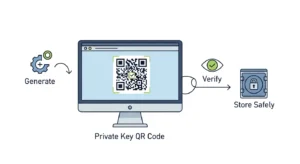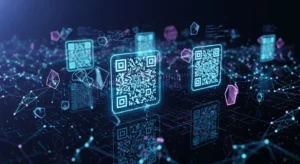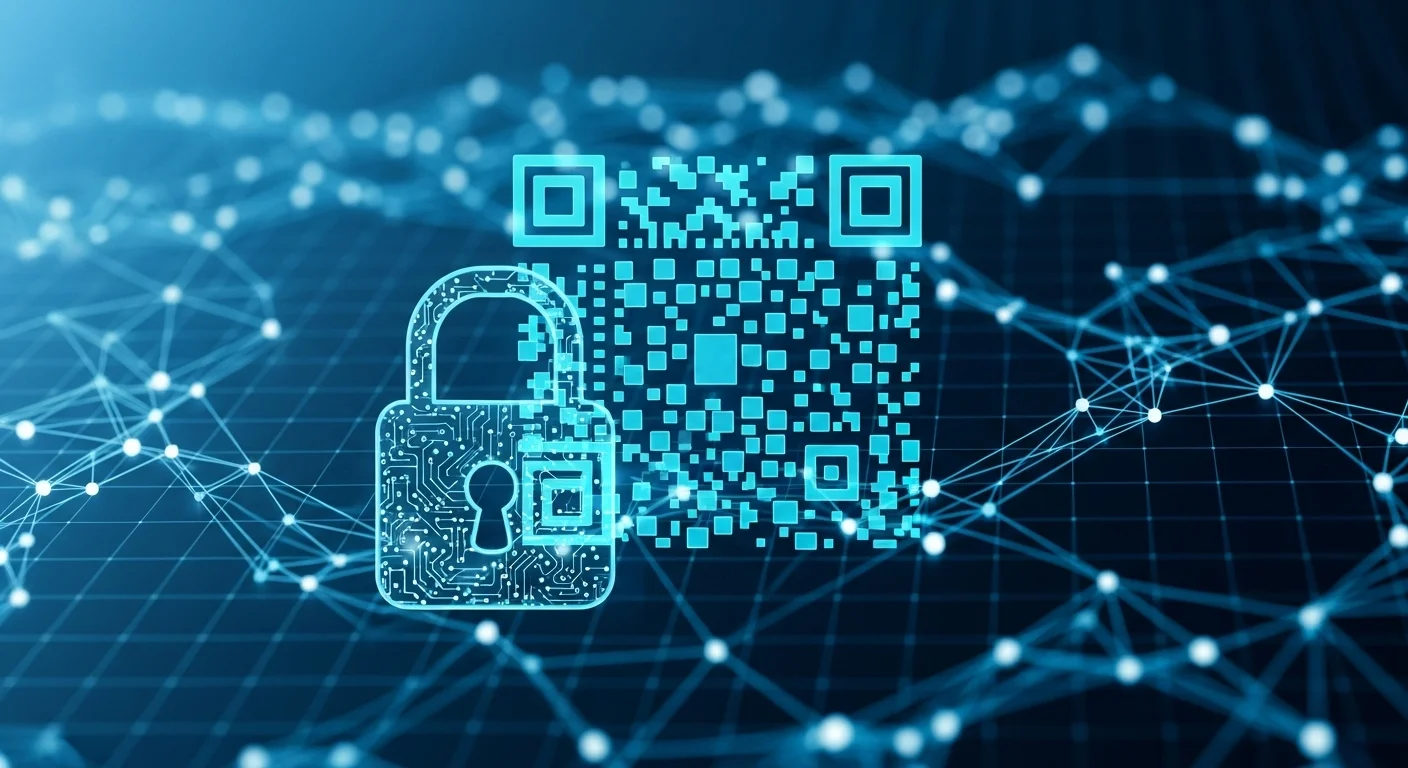Blockchain Private Key QR Code: Secure Guide
In the world of blockchain and cryptocurrency, security remains the top priority for every user. Managing private keys safely determines whether digital assets stay protected or become vulnerable. One of the most convenient yet risky methods of handling private keys is through a blockchain private key QR code. This guide explains everything you need to know about what it is, how it works, how to use it safely, and why extreme caution is essential.
Understanding the Core Concepts
What Is a Blockchain Private Key?
A blockchain private key is a secret alphanumeric code that gives access to your cryptocurrency funds. It acts like a password that authorizes transactions and confirms ownership of digital assets. Every private key corresponds to a public key and wallet address, forming the core of blockchain security. Anyone who gains access to your private key can control your assets, which is why safeguarding it is critical.
What Is a QR Code and Why Is It Used in Blockchain?
A QR code (Quick Response code) is a scannable image that stores information in a compact and accessible format. In blockchain technology, QR codes are used to simplify wallet addresses, transaction IDs, and authentication processes. Instead of typing long wallet addresses manually, users can scan a QR code for instant accuracy and convenience.
What Is a Blockchain Private Key QR Code?
A blockchain private key QR code is a scannable image that contains your private key information. It converts the complex private key string into a QR code that can be read by compatible wallets and devices. While this offers speed and convenience, it also introduces significant security risks if not handled correctly.
It is important to understand that there is a big difference between a public address QR code and a private key QR code. A public QR code can be shared openly for receiving funds, but a private key QR code must always remain confidential. Sharing it even once can lead to irreversible asset loss.
How to Create a Blockchain Private Key QR Code (Step-by-Step)
1. Choose a Secure Offline Generator
The safest way to generate a blockchain private key code is by using an offline generator. Never create your QR online, as internet-connected platforms can be compromised. Use an air-gapped device or a dedicated offline tool that does not connect to the web. This ensures that your private key never leaves your local environment.
2. Input and Encode Your blockchain private key qr code
Please enter your private key manually or import it through a secure offline file. The QR generator will encode it into a graphical form. Most private keys are represented in Base58 or hexadecimal formats. Before confirming, double-check for input accuracy, since even one incorrect character can make the QR unusable.

3. Verify and Export the QR Code
Once generated, please verify that the QR accurately represents your private key by scanning it with a trusted offline wallet application. Export the QR code to a secure storage device or print it on paper. Avoid uploading or storing the file on any cloud service, as cloud storage can be hacked or compromised.
How to Use a Blockchain Private Key QR Code
The primary purpose of a blockchain private key QR code is to import or access your wallet without typing the entire key. To use it, open your wallet application, choose the “Import Private Key” option, and scan the QR code with your device’s camera. The wallet reads the private key instantly and unlocks your digital funds.
Some advanced wallets also allow QR-based transaction signing. This means you can prepare a transaction on an offline device, scan it with another device, and complete it securely without exposing the private key online.
Why Use a Private Key QR Code?
Private key QR codes provide a combination of speed and accuracy. They eliminate the risk of typing errors that can occur when entering long strings of characters. This method is useful for creating paper wallets, transferring ownership, or setting up cold storage. For advanced users, it can also streamline multi-signature operations or serve as a recovery backup in case a wallet is lost.
However, convenience always comes with risk. If anyone scans your private key QR, they can access your funds instantly. Therefore, while QR codes can be practical, they should only be used with strict security practices.
Security Risks and Common Mistakes
-
Generating QR Codes Online
Online QR generators may store data on remote servers. Even temporary storage can expose your key to cyber threats. -
Sharing the QR Code Publicly
A private key QR code must never be shared. If someone else scans it, your funds can be stolen immediately. -
Storing the QR on Cloud or Email
Uploading private key QR images to email, drive, or mobile gallery increases exposure to hacking attempts. -
Reusing the Same Key
Using one private key across multiple wallets weakens overall security. -
Scanning from Untrusted Devices
Malware or spy apps can capture the decoded private key when scanned from infected devices.
How to Keep Your Private Key QR Code Safe
Best Practices
Always create and store your QR code offline. Use a device that has never been connected to the internet for generation and verification. If you print your QR code, use high-quality paper and avoid sharing photos of it. Store the printed version in a safe or fireproof container.
Backup and Redundancy
Keep multiple backups of your QR code in separate, secure locations. You may store one copy in a safe at home and another in a safety deposit box. If you suspect that a QR has been compromised, destroy it immediately and generate a new key.

Hardware Wallet Alternative
If managing a blockchain private key QR code feels risky, consider using a hardware wallet instead. Hardware wallets store private keys inside a secure chip that never exposes them to external systems. This is one of the safest options for long-term storage.
Advanced Topics
Air-Gapped Devices for QR Generation
Air-gapped devices are systems that have no physical or wireless connection to the internet. Generating a QR code on such a device prevents data leaks and ensures maximum security. Many professionals use old laptops or dedicated USB tools for this purpose.
QR Code Encryption Techniques
Encrypting a QR code before printing adds another protection layer. You can use AES or PGP encryption so that even if someone finds your printed QR, they cannot decode the private key without the decryption password.
Blockchain Recovery via QR Code
If a QR code is damaged or partially unreadable, specialized recovery software can sometimes reconstruct the data. Storing redundant copies helps ensure you never lose access to your funds.
Future of QR Codes in Blockchain Security
The role of QR codes in blockchain is evolving quickly. Developers are integrating secure QR signing features into modern wallets. Future versions may include encrypted QR transfers, multi-factor authentication, and biometric verification for even greater safety.
FAQs
Can I share my blockchain private key QR code with anyone?
No. Sharing it gives full control of your funds to others.
What happens if I lose my QR code?
You lose access to the wallet unless you have a backup of your private key.
Is it safer to store QR or plain text?
Both require the same security precautions. However, QR is easier to scan, which can increase exposure risk.
What is the difference between a paper wallet and a QR code?
A paper wallet often contains both the public and private keys in text and QR form, while a QR code may contain only one.
How do I know if my QR generator is safe?
Use an offline, open-source generator verified by the blockchain community.
Final Thoughts
A blockchain private key QR code can make managing crypto wallets faster and easier, but it also introduces major security responsibilities. The key takeaway is simple: convenience should never replace caution. Always generate and store your QR codes offline, encrypt them if possible, and never share them. For most users, hardware wallets remain the most reliable solution.
When used wisely, a blockchain private key QR code can simplify wallet management while keeping your assets safe, but one careless mistake can undo all your security efforts. Be informed, be cautious, and treat your private key like the digital treasure it truly is.








1 comment